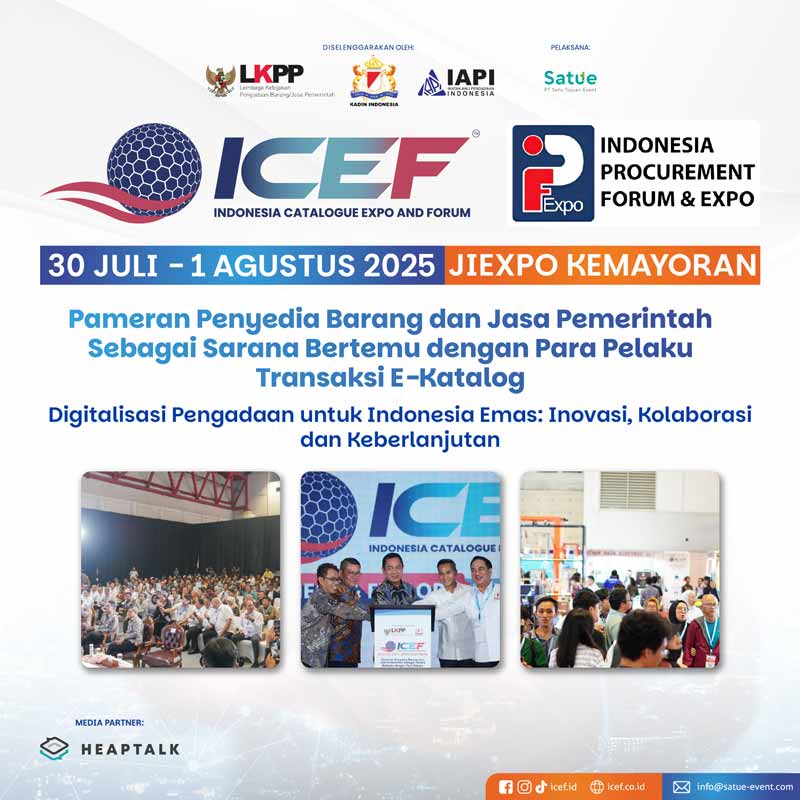Heaptalk, Jakarta — Indonesia is the largest archipelagic country in the world with enormous potential. With more than 17,500 islands with a coastline of up to 108,000 km and a sea area of up to 6.4 million km2, the country has a rich marine biodiversity. Besides the products of the fishery sector, Indonesia also has coral, mangrove, and sea grass, which in the future have a very high potential for carbon value.
According to Acting Deputy for Coordinating Maritime Resources, Coordinating Ministry for Maritime Affairs and Investment Mochammad Firman Hidayat, Indonesia is one of the world’s main producers of aquaculture. According to FAO 2020 data, Indonesia is a major contributor to aquaculture products in the world, ranking second, with a production volume of 14.8 million tons equivalent and the foreign exchange value of fishery exports reaching 56% of aquaculture products.
In addition to earning foreign exchange, aquaculture products play a very important role in employing about 2 million fish cultivators and as a source of protein food for the community. “In terms of employment, we also absorb around 2.2 million fish cultivators. About 53% of animal protein comes from fish. Thus, the potential is huge and the realization is also great,” said Firman during the National Shrimp Action Forum 2022 (10/26).
Shrimp is the biggest contributor to Indonesian aquaculture production. The largest export volume in 2020 came from shrimp, which was around 26% with the contribution of export value reaching 49% of the total export value. Hence, the government includes shrimp in the development of the national industry to be one of the national priorities in the Medium-Term National Development Plan (RPJMN).
Firman said, “In the 2024 medium-term development plan, President Joko Widodo directs us to increase shrimp exports by up to 250%. The approach is through the revitalization of traditional shrimp ponds and sustainable intensification of private ponds. The target is that we want to become the world’s top five fishery exporters.”
The increase in exports is equivalent to US$4.3 billion or growing by around 31.7% per year with production reaching two million tons by 2024. Until 2021, the value of shrimp exports has only reached US$2.2 billion with a production of fewer than one million tons or only 881 thousand tons. According to Firman, achieving the target is not an easy thing because the government only has approximately two years to achieve the target.
Simplify the investment process to attract investors in the fisheries sector
The efforts to become the top five exporters are facing several problems. One of which, according to Firman, is people’s business credit (KUR) realization in the fisheries sector is still lower than in the agricultural sector. KUR’s realization in agriculture can reach close to Rp70 trillion with the number of debtors up to more than 2 million.
Meanwhile, people’s business credit in the fisheries sector is only Rp8 trillion with a total of 231,329 debtors. “Even though we have enormous maritime potential, not inferior to agriculture, the amount of financing provided to the fishery sector is very small. This is one of the problems that we must address forwards. Without financing, it is difficult to achieve the target,” explained Firman.
From the investment side, the fisheries sector has the lowest realization of both foreign direct investment (FDI) and domestic direct investment (DDI). Foreign direct investment contributes to only 0.5% of the total national FDI based on the trend from 2012 to Q3 2022. Further, FDI in 2021 decreased significantly by 65% YoY compared to 2020, from Rp700 billion (US$48.2 million) to only Rp249.8 billion (US$17.1 million).
Until the third quarter of 2022, the realization of FDI was only US$6.7 million, even lower than the previous year. Firman emphasized, “How can we achieve the production and export targets if the FDI is decreasing very deep? Therefore, we need to make an extra effort to attract more investment to Indonesia.”
On the other hand, domestic direct investment shows a positive trend. Although the share is still small at 0.2%, the growth from year to year is relatively higher than foreign direct investment. Firman delivered that FDI and DDI in total still grow positively as DDI continues to grow high. The homework is to increase investment, particularly foreign investment.
“Without investment and financing, we will experience difficulties. That is why one of the programs from the National Shrimp Action Forum is to simplify the investment process into the remaining two steps. By doing that, we can attract more investment to Indonesia for the fisheries sector,” explained Firman.
In addition, the government also launched a crash program that focuses on small-scale farmers. Through the program, the government will arrange irrigation and electricity infrastructures as well as improve production input. For the private ponds, the government will improve licensing and land certainty as well as encourage a more conducive investment climate.
In his closing remarks, Firman expected all those efforts and the collaboration of all stakeholders can help achieve the production target of 2 million tons of shrimp and exports to reach US$4.3 billion per year by 2024.














